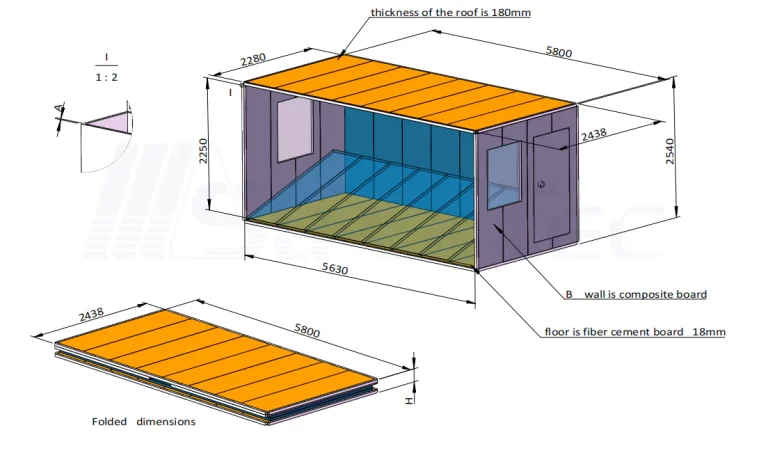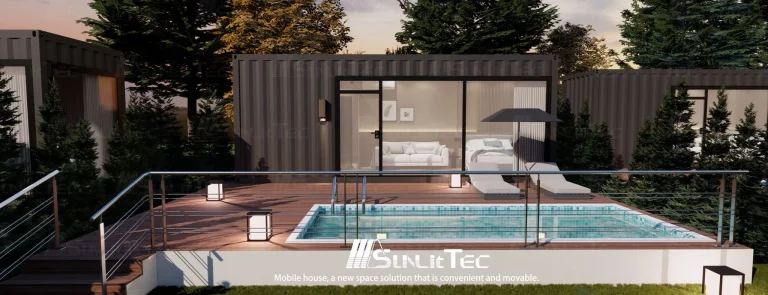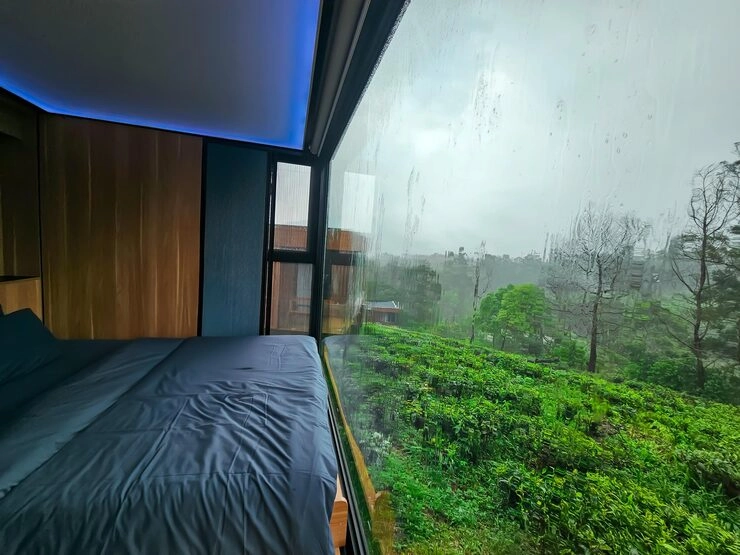
Mobile homes are getting more popular. They’re affordable and flexible. But if you want one to last, you need to know how it holds up in different weather. This is really important. Basically, these are homes built in a factory. They can be moved in one piece. Sometimes, they can be taken apart and put back together easily. This design means they can work in all sorts of places, from hot deserts to snowy mountains. However, how tough they are really comes down to a few things. The quality of the build, the kind of foundation, and special features for the local weather matter a lot.
Key Factors That Influence Mobile Home Durability
When we talk about a mobile home’s strength, it’s not just about the materials. How it’s put together and set up is just as crucial.
Materials Used in Construction
A mobile home’s lifespan begins with good building materials. Tough siding, like fiber cement or treated wood, handles bad weather much better than cheaper stuff. Roofing choices such as metal panels are great against wind and rain.
Structural Design and Engineering Standards
Today’s mobile homes have to meet specific building codes. These codes consider things like high winds, earthquakes, and heavy snow. What’s more, stronger frames and supportive walls make the whole structure more stable.
Installation and Foundation Requirements
Getting the installation right is a big deal. A home that isn’t anchored correctly could fall apart. Prepping the site is also key. This includes making the ground level and picking the right foundation, which is a huge part of making sure the home lasts for years.
Mobile Homes in Hot and Arid Climates
Areas with crazy heat need special design features.
Impact of High Temperatures
Too much sun and heat over time can bend the siding. It can also wear out the roof and mess up the paint and finishes on the outside.
Ventilation and Insulation
Good airflow is essential. So are things like radiant barriers in the roof and quality insulation. All of this helps keep the inside cool and lowers your power bills.
Protective Measures
Using UV-blocking coatings on windows, doors, and the outside of the house can make them last longer. This helps stop fading and cracking.
Mobile Homes in Cold and Snowy Regions
Cold weather brings its own problems, like freezing temps and lots of snow.
Effects of Freezing Temperatures
You need good sealing and insulation. This stops water from getting into small cracks, freezing, and expanding. That kind of damage can seriously harm the home over time.
Snow Load Capacity and Roof Design
Roofs have to be built strong enough to hold a lot of heavy snow. A steep roof helps snow slide right off. Plus, extra-strong supports in the roof frame give it more strength.
Thermal Efficiency
Double-pane windows and good heating systems are really important. They keep the heat from escaping, so you stay warm inside all winter.
Mobile Homes in Humid and Rainy Environments
Too much dampness is bad news. It can cause mold, rust, or even make the structure rot.
Moisture Resistance and Mold Prevention
To protect the inside, it’s smart to use drywall that resists moisture. Good airflow is also a must to keep mold away.
Sealing and Drainage Systems
First of all, you have to seal any gaps around windows and doors to stop water from getting in. Also, good gutters are needed to direct rain away from the home’s base.
Corrosion Protection
In places that are always damp, you need to use fasteners made of galvanized or stainless steel. Metal frames also need special coatings to keep them from rusting.
Mobile Homes in Coastal Areas with High Salinity
The salty air near the ocean is really tough on metal and other materials. It causes them to break down quickly.
Salt Air Corrosion Risks
Any metal parts on the outside need to be protected. This means using special marine-grade coatings. Or, you can make them out of materials that don’t rust easily, like stainless steel.
Wind Load Tolerance
Homes near the coast have to be built to handle stronger winds. They need extra-strong tie-down systems. These anchor the house firmly to the ground so it can stand up to powerful winds from big storms or hurricanes.
Mobile Homes in Seismic Zones or Mountainous Terrain
If you’re in an earthquake area or on hilly land, a stable structure is the most important thing.
Earthquake-Resistant Features
Features like flexible joints and crisscross braces can make the home more stable when the ground shakes. Besides, because these homes are light, they don’t get shaken as hard during a quake.
Foundation Solutions for Uneven Ground
On ground that isn’t flat, you need a solid base. Concrete posts bolted to steel plates or a cement foundation with strong anchors can create a safe, level platform.
Foundation Requirements for Long-Term Durability
No matter the climate, a strong foundation is everything.
Why Gravel Bases Are Not Recommended
We don’t suggest gravel bases. Why? Because gravel can move around over time. This can make the house unlevel and cause water to collect underneath.
Hardened Level Ground as a Standard
A concrete pad or ground that has been packed down hard is the standard. It creates a steady base that won’t wash away or move.
Energy Systems Adapted to Climate Needs
Being energy efficient is a big deal. It saves you money and keeps you comfortable, no matter where you live.
National Grid Connection
Most new mobile homes hook right up to the local power grid. This gives them a steady supply of electricity for everything.
Optional Solar Panels
But you can also get solar panels. This is a great green option if you’re living off-grid or have special needs, so that you don’t have to rely on the main power company.
Considerations for Efficient Energy Usage
Things like smart thermostats, programmable heating and cooling, and LED lights all help save energy. When you use these technologies together, you can live comfortably and affordably in a mobile home, no matter what the weather is like outside.
Introducing Sunlit Tec as a Reliable Mobile House Supplier
Once you get these weather-related ideas, it’s obvious that picking a good supplier is vital. Sunlit Tec has a variety of creative, top-notch mobile homes. They are built to be tough and flexible.
U8 Space Capsule: Futuristic Design Meets Turnkey Functionality
The U8 Space Capsule has a cool, futuristic look that reminds you of a spaceship. It weighs 11 tons and has 38 square meters of space, all built on a strong, galvanized steel frame. Its best feature is the huge window made of tempered glass that goes from the floor to the ceiling, giving you amazing views. The U8 is delivered fully furnished and comes with a smart system that controls the whole house. Thus, it’s a complete, ready-to-go living solution for any spot.
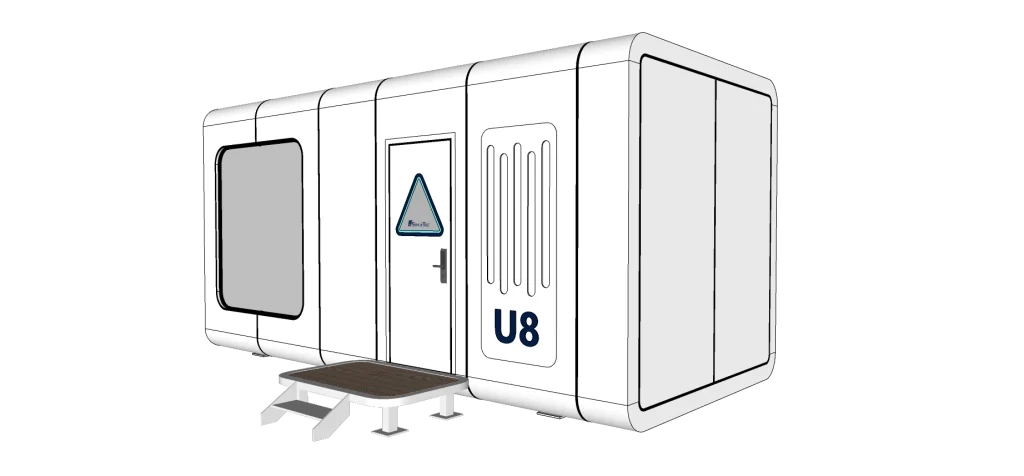
Double-Storey Triangle House C8: Spacious Living with Modern Aesthetics
For people who need more room, the C8 has a special two-level A-frame style. It’s 51 square meters and weighs 10 tons. This model gives you a large living area, kitchen, and bathroom downstairs, with a private bedroom upstairs. The C8 gives you the extra space of a regular house but with the smart design and cool look of a factory-built home. This makes it a great pick for families or as a high-end rental.
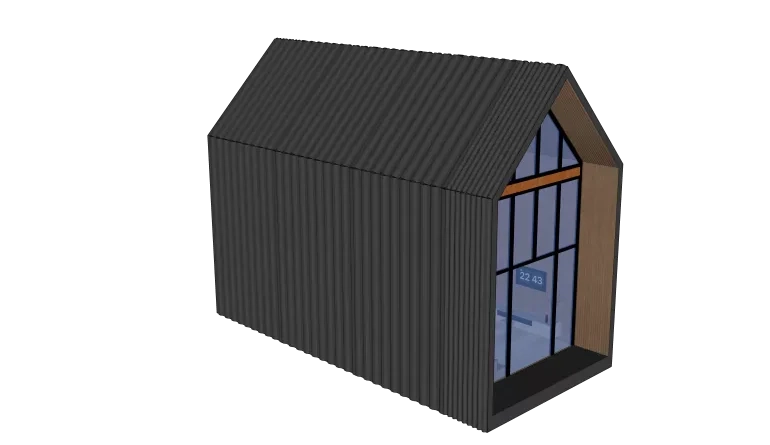
Summary of Key Takeaways
Climate is Key
How long a mobile home lasts really depends on whether its design, materials, and features are right for the local weather.
Foundation First
A strong, flat foundation, made from concrete or packed-down earth, is the number one thing for keeping the structure stable anywhere.
Quality Matters
Picking a trusted supplier like Sunlit Tec means you can be sure your mobile home is made with good materials. It will be built to handle whatever your local environment throws at it.
FAQs:
Q1: What is the best foundation type for my mobile home?
A: A concrete foundation that’s anchored with bolts is tougher and works well in most places. It offers solid support if the ground moves or in case of an earthquake. We suggest having a professional check out your property to figure out the best option for you.
Q2: Can I use solar panels instead of connecting my mobile home to the grid?
A: Definitely. Hooking up to the grid is the usual way, but we can also install solar panels if you want. It’s a fantastic choice for remote spots, or for anyone who wants to be more self-sufficient and use clean energy.
Q3: Are mobile homes suitable for year-round living?
A: For sure. Sunlit Tec mobile homes are great for living in year-round. They have the right insulation, airflow, good windows, and proper heating and cooling systems. So, they make a comfy, safe, and cost-effective home no matter the season.

